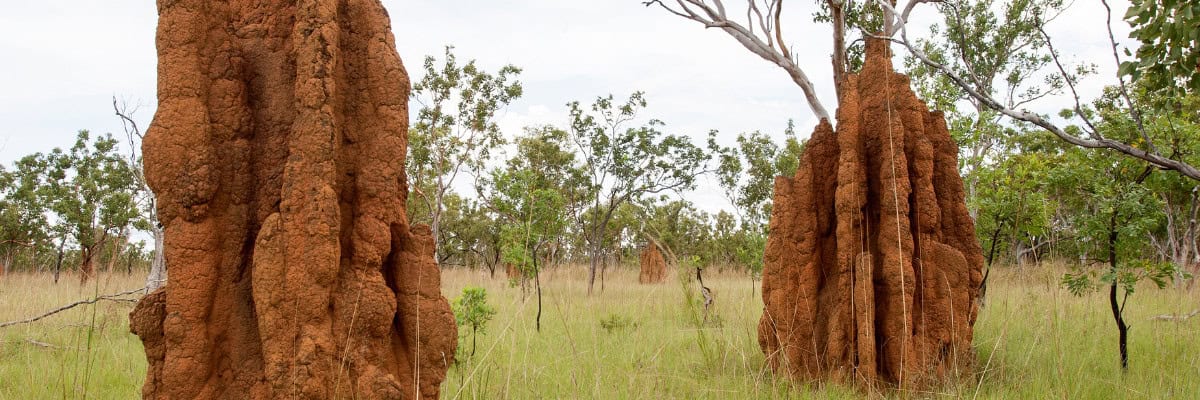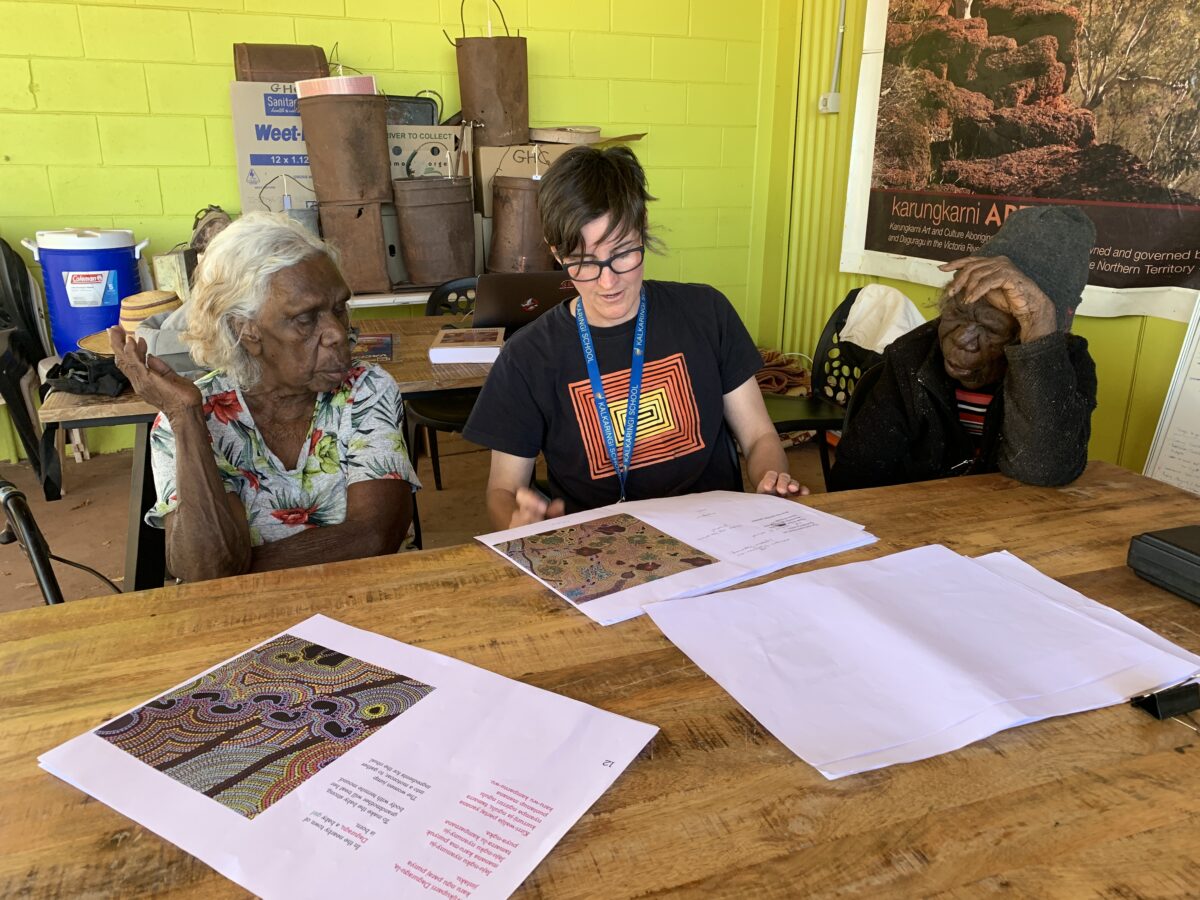
In the Northern Territory, termites hold a significant place in the cultural practices of the Gurindji people. A new trilingual book children’s book, Tamarra: A Story of Termites on Gurindji Country, highlights their incredible significance while simultaneously bridging generational language gaps.
Witnessing the birth of a new language

Written in Gurindji, Gurindji Kriol and English, Tamarra is the first trilingual children’s book featuring First Nation languages published in Australia. Over 30 community members of the Gurindji nation worked with researchers to create the book, which was published by Hardie Grant, and recently shortlisted for the Children’s Book Council of Australia’s 2024 Eve Pownall Award.
‘I’ve been working with the Kalkaringi community in the Northern Territory for over twenty years,’ says co-author Professor Felicity Meakins FAHA FASSA. ‘Together, we’re documenting the Gurindji language and culture.’
The Kalkaringi community lives approximately 500 kilometres south-west of Katherine in the Northern Territory.
‘Gurindji is the traditional language of the Gurindji people, but it is highly endangered, now only spoken by around 50 older people.’
‘The main language now spoken by Gurindji people is Gurindji Kriol which has around 1,500 speakers,’ says Felicity. ‘This language combines the traditional language with north Australian Kriol to create a new language which linguists call a “mixed language”.’
Australian Kriol is a Creole language, drawing on the dominant language of the region and mixing with local languages. Linguists theorise that over 30,000 people may speak Kriol in Australia. It is recognised as its own language.
‘Gurindji Kriol has vocabulary and grammar from both languages (Kriol and Gurindji) but also structures which are unique. Mixed languages like this are highly rare and it is exciting to watch the emergence of a new language.’
The story of Tamarra
The creation of the children’s book began when Meakins witnessed Gurindji newborn babies being treated with ground-up termite mound during a ceremony.

Together with microbiologist Dr Gregory Crocetti and artist Briony Barr, researchers and community members devised an idea of producing an illustrated children’s book that would combine Gurindji knowledge of termites and their mounds with Western science to communicate to the broader world the wonders of this much maligned insect.
‘We collected termite mound and other bush medicines and held a session treating several Gurindji babies. We then held a community-wide meeting where Gurindji Elders Violet Wadrill and Topsy Dodd Ngarnjal presented their knowledge of termites, including medicinal practices, and Gregory Crocetti presented Western knowledge of termites and medicinal purposes.’
Crocetti, Barr and Gurindji teacher Cecelia Edwards also ran classroom activities with Gurindji children about termites and their mounds to ensure children saw themselves in the story, and the community was the primary beneficiaries of the project.
Concurrently, the writing team collaborated Gurindji artists from Karungkarni Art, sketching out illustrations for the story. These illustrations were then painted on a large-scale, including a two-by-three metre collaborative work which told the story of Gurindji bush medicine.
The art of trilingual translation
The book was written by iteratively translating between three languages: Gurindji, Gurindji Kriol and English. It is also the first time Gurindji Kriol has appeared in print in a non-academic publication.

‘We added a termite mound-shaped QR-code at the beginning of the book allowing the reader to listen to the words and hear how they’re pronounced. It’s a teched up version of the old read-along books many of us had as children!’
‘For the younger generations who speak Gurindji Kriol,’ Felicity says. ‘It is a reflection of tradition and modernity and what it is to be Gurindji in the new century. Also, hearing your own language in mainstream media services is important for the self-esteem of younger generations of First Nations peoples.’
‘Every Gurindji child who reads the book sees themself on the page for the first time—and knows that their language, their stories and ultimately their being has value.’
For Felicity, her next project is out in July — Bina: First Nations Languages Old and New, which she co-wrote with Indigenous linguists Gari Tudor-Smith and Paul Williams. The book tells the story of language from the earliest exchange of words between colonists and First Nations people to today’s reclamations.
‘This is the first book which tells the incredible story of the resilience and recovery of Australia’s First Nations languages. I think this is a topic that more and more people in Australia are interested in given that it is the UNESCO International Decade of Indigenous Languages.’



